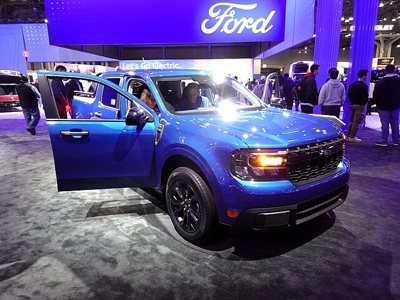In today's economy, fuel efficiency is one of the most important factors considered by car buyers. A vehicle could be used for various purposes and reliable most of the time, but it's all for nothing if it's actually a gas guzzler. Car owners are not just looking for great cars; they are willing to make small sacrifices to get a fuel-efficient vehicle for long-term savings.

Fuel Efficiency And Vehicle Size
A vehicle's size greatly affects its fuel efficiency. However, the relationship between a vehicle's size and fuel efficiency is more complex, as several factors contribute to gas usage. These factors include:
Weight
Large vehicles are generally heavy, which means they require more energy to move.
Pickup trucks, such as the F-150, have a 22 MPG rating using their 2.7L Twin-Turbo V6 engine, while a compact crossover SUV like the 2025 Honda CRV is rated 37 MPG.
Engine Size
Aside from size, a car's fuel efficiency is also determined by what's under the hood. Smaller cars tend to be more fuel efficient because they use a relatively smaller engine while trucks and SUVs, especially those used for towing and hauling, often require V6 or V8 engines.
Aerodynamics
More often than not, larger vehicles are used for off road which means they will need a higher ground clearance compared to regular cars. Because of higher ground clearance, they tend to be less aerodynamic and require more power to move due to high wind resistance. To address this problem, some vehicles with high ground clearance feature designs to reduce wind resistance.
To illustrate the impact of aerodynamics on fuel efficiency, consider the following example: The Ford F-150 generally has a ground clearance of 8.7 to 8.4 inches and has a low MPG rating, while the Toyota Prius has a ground clearance of only 6.0 inches and is considered the king of fuel efficiency, with up to 57 MPG.
What Is MPG
MPG stands for Miles Per Gallon and it is used to measure the fuel efficiency of a vehicle. It is basically a unit of measurement that represents the distance a vehicle can travel on one gallon of fuel. For example, a car with an MPG rating of 30 can travel 30 miles on one gallon of gas.
Hybrids for Increased Fuel Efficiency
There is always a demand for more fuel-efficient vehicles, and carmakers continually seek solutions, particularly for larger vehicles. A full-size truck with only 22 MPG can pose significant financial challenges to the vehicle owner, especially when used daily. Improved engine and vehicle design may improve efficiency but alternative sources of energy have been the key to reduce the need for fuel.
 Trucks with hybrid engines are leading the way in fuel efficiency. A great example is the 2025 Ford Maverick Hybrid with its combined rating of 37 MPG - a difference of 15 MPG compared to the traditional F-150 trucks. When it comes to performance, the latest Maverick Hybrid has a top speed of 110 mph and a standard towing capacity of 2,000 lbs.
Trucks with hybrid engines are leading the way in fuel efficiency. A great example is the 2025 Ford Maverick Hybrid with its combined rating of 37 MPG - a difference of 15 MPG compared to the traditional F-150 trucks. When it comes to performance, the latest Maverick Hybrid has a top speed of 110 mph and a standard towing capacity of 2,000 lbs.
A vehicle's size significantly influences its fuel efficiency. Larger vehicles are often heavier due to their larger engines and are less aerodynamic due to their higher ground clearance, resulting in increased fuel consumption. However, aside from better engine and vehicle design, trucks with hybrid engines are being introduced to the market to improve fuel efficiency.
In conclusion, vehicle size has an impact on fuel efficiency with factors such as weight, engine size, and aerodynamics coming into play. As the demand for fuel-efficient vehicles continues to grow, car manufacturers are stepping up their game with innovative solutions like hybrid engines. By understanding the relationship between vehicle size and fuel efficiency, car buyers can make informed decisions, saving costs and contributing to a more sustainable future.
